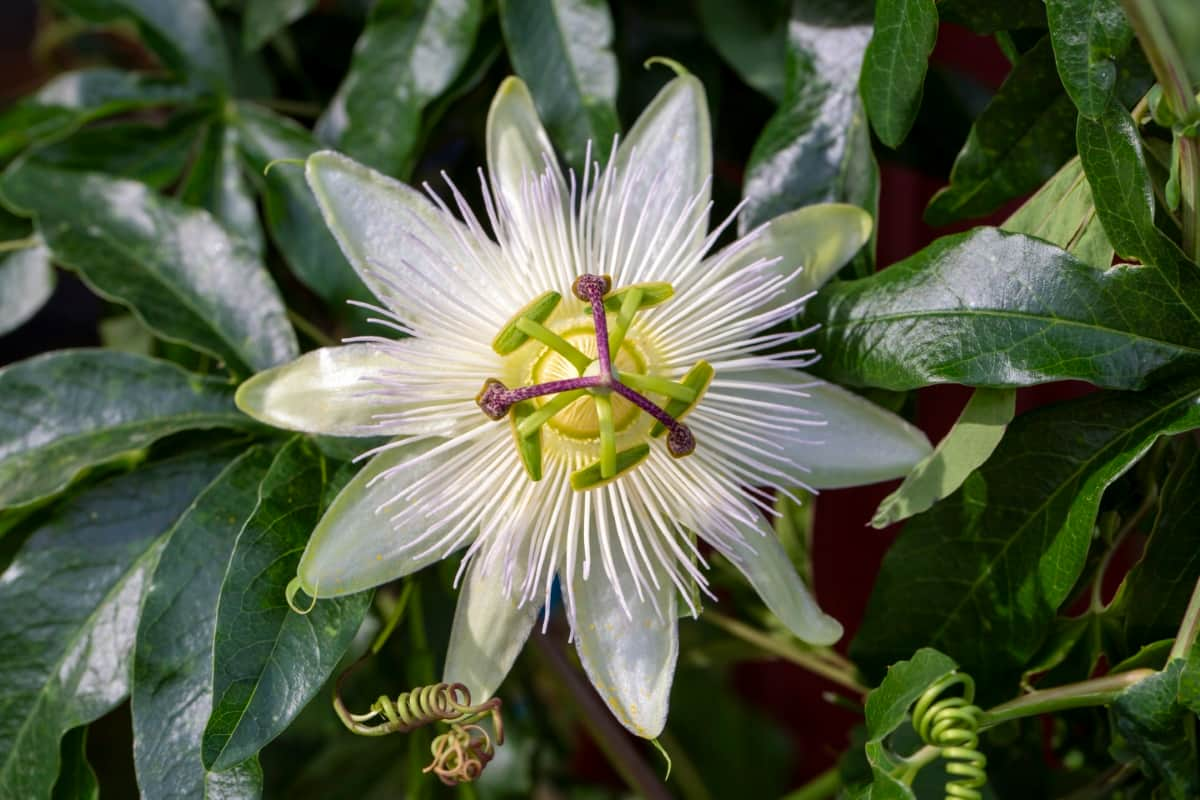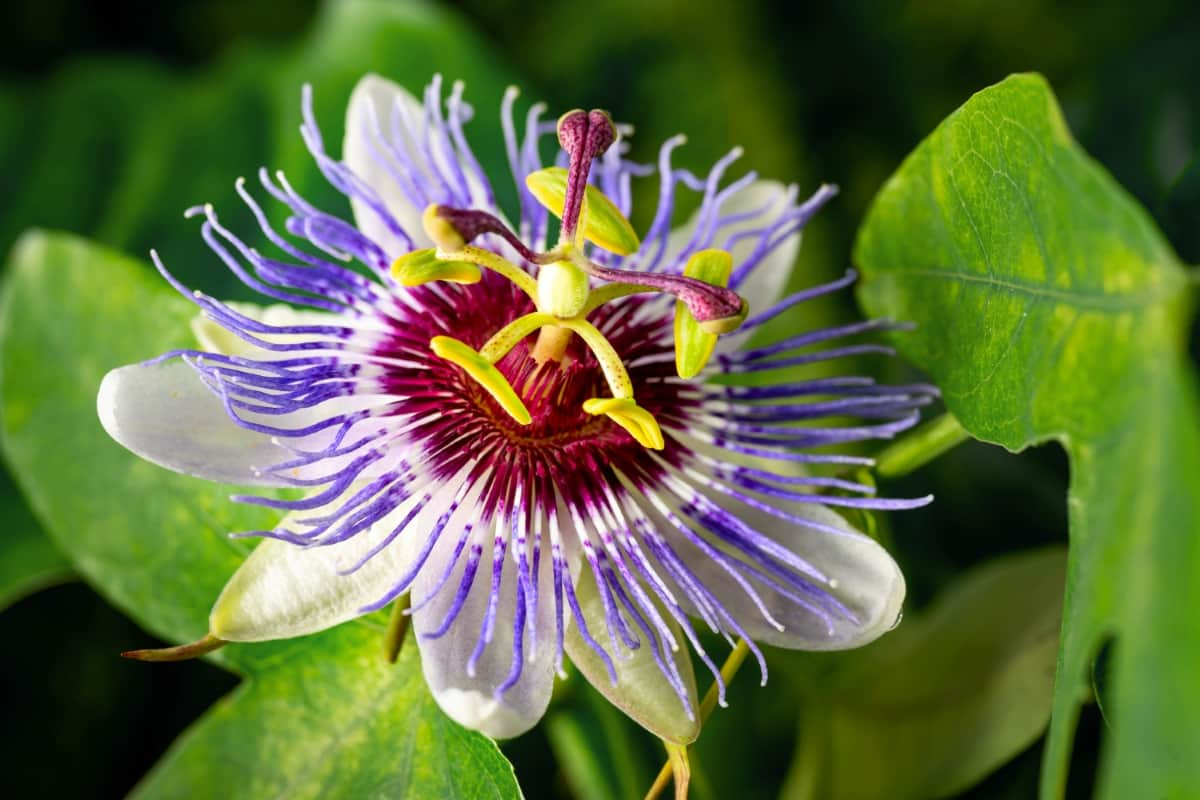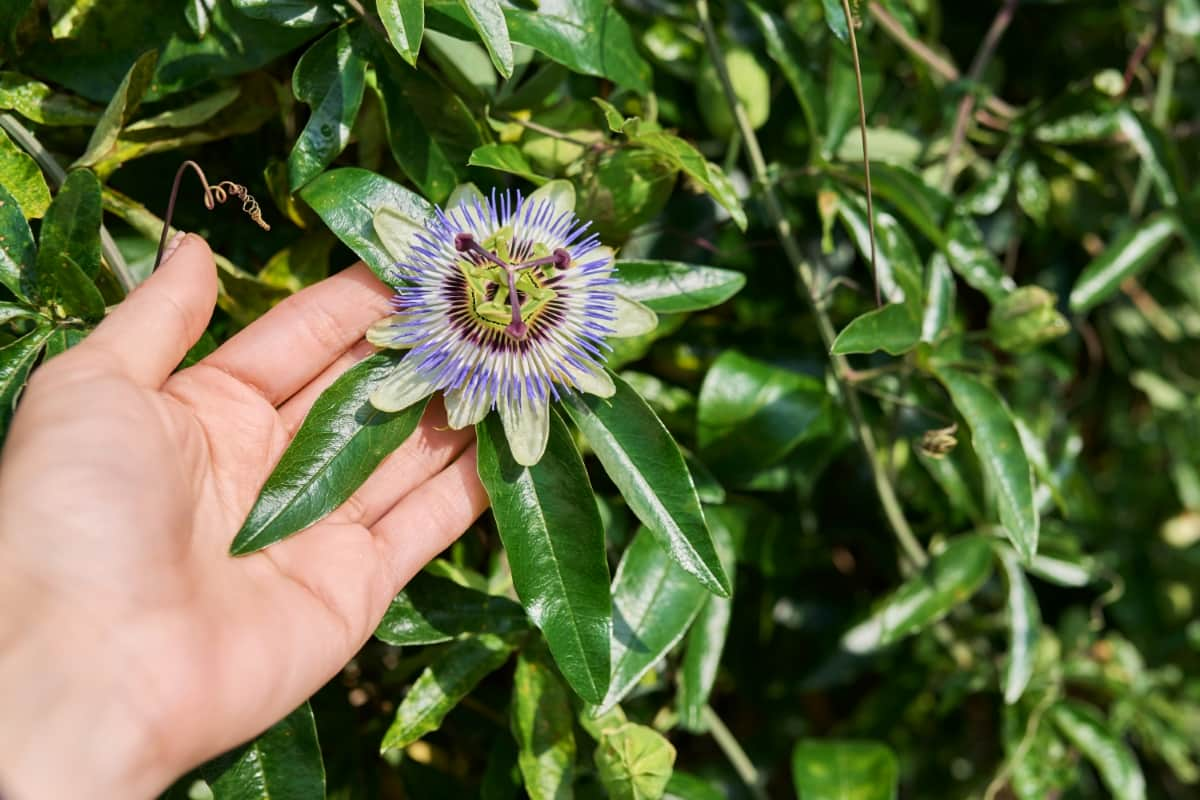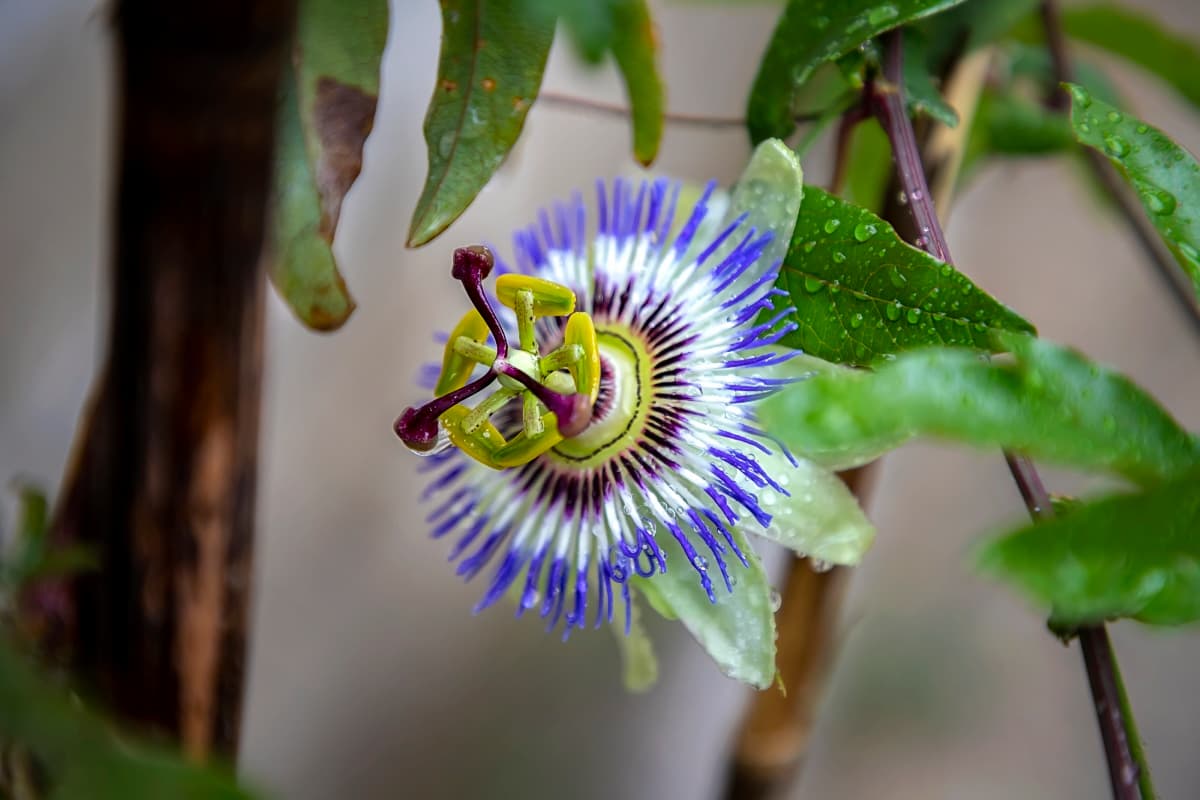Passiflora caerulea, also referred to as the Blue Passion Flower, is a striking and robust vine recognized for its intricate blossoms and luxuriant foliage. Growing this plant can be a rewarding experience, whether from seeds, in pots, or even indoors. It is favored not just for its striking appearance but also for its taste and various benefits.

While passiflora caerulea is not poisonous, understanding its needs in terms of location, soil, watering, support, pruning, and fertilization is crucial for healthy growth. This article will guide you through the process of growing passiflora caerulea, dealing with pests and diseases, and propagating it effectively.
How to Grow Passiflora Caerulea
Understanding Passiflora Caerulea
Passiflora caerulea, with its unique structure and vibrant colors, attracts gardeners and nature enthusiasts alike. Originating from South America, it thrives in warm climates but can also adapt to cooler temperatures, making it a versatile plant for various environments.
The blossoms, which thrive from summer through early autumn, not only offer visual beauty but also draw in pollinators like bees and butterflies, enriching your garden’s biodiversity. The fruits of passiflora caerulea are edible, though not as flavorful as other passion fruit varieties, and are often grown more for their ornamental value.
Selecting the Ideal Location for Growing Passiflora Caerulea
Choosing the right location is essential for the successful growth of Passiflora caerulea. This vine loves sunlight, so a spot that receives full sun for most of the day is ideal. However, in extremely hot climates, some afternoon shade can be beneficial. Good air circulation is also important to prevent diseases. If you’re considering growing passiflora caerulea indoors, ensure it gets ample light, perhaps near a south-facing window. For outdoor planting, select a location where the vine can climb freely, such as near a fence, trellis, or arbor.
Soil Requirements for Cultivating Passiflora Caerulea
Passiflora caerulea is not overly fussy about soil, but it thrives best in well-draining soil. A blend of garden soil, compost, and either perlite or sand can establish an optimal setting for root development. The soil should maintain a pH level ranging from slightly acidic to neutral. Ensuring good drainage is crucial, as passiflora caerulea does not like to sit in waterlogged soil, which can lead to root rot. Regularly checking the soil condition and making amendments as necessary will support the healthy growth of your passiflora caerulea.
Watering and Humidity Needs of Passiflora Caerulea
Consistent watering is key to keeping Passiflora caerulea healthy, especially during its growing season. The soil should be kept moist but not soggy. Reducing watering in the winter months is advisable as the plant goes into dormancy. Passiflora caerulea thrives in a humid setting, which can be accomplished by either misting its leaves or situating a water tray nearby. However, ensure that the foliage does not remain wet for extended periods, as this can invite fungal diseases.
In case you missed it: How to Grow Shampoo Ginger Lily: From Propagation to Harvest

Providing Adequate Support for Passiflora Caerulea Vines
As a climbing vine, passiflora caerulea requires support to grow optimally. Trellises, fences, or arbors are great options. The plant uses tendrils to climb, so providing a structure with suitable surfaces for these tendrils to grasp is important. Regularly guiding and gently tying the vines can help manage their growth and ensure that the plant covers the desired area effectively.
Pruning and Training Passiflora Caerulea for Optimal Growth
Pruning is a vital practice for the upkeep and aesthetics of Passiflora caerulea. It serves to control its size, promote fresh growth, and eliminate any dead or diseased sections. Pruning involves cutting back overgrown vines and removing any weak or damaged stems. Training the vine by tying it to supports can also encourage it to grow in a specific direction, creating an aesthetically pleasing display in your garden.
Fertilizing Passiflora Caerulea: Best Practices
Fertilizing Passiflora caerulea is essential for its optimal growth and flowering. To accomplish this, utilize a balanced, water-soluble fertilizer during the active growth period, usually in spring and summer, to provide the necessary nutrients. Be cautious not to over-fertilize, as it can promote excessive foliage growth to the detriment of flower development. During the plant’s dormant phase in winter, it’s advisable to reduce or suspend fertilization to enable the plant to rest and conserve energy.
In case you missed it: How to Grow Saffron Hydroponically: Best Practices for Hydroponic Saffron

Dealing with Pests and Diseases in Passiflora Caerulea
Passiflora caerulea can be susceptible to pests like aphids, spider mites, caterpillars, and diseases such as fungal infections. Regular inspection of the plant will help in early detection and control. Natural remedies or appropriate pesticides can be used to manage pests. To stay healthy, make sure the air flows well, avoid watering from above, keep the leaves dry, and clean up fallen leaves and trash. This reduces the chance of getting sick.
Propagating Passiflora Caerulea: Methods and Tips
Propagation of passiflora caerulea can be done through seeds or cuttings. To grow passiflora caerulea from seeds, clean the seeds from the fruit pulp and sow them in a seed-starting mix, keeping them warm and moist until germination. To propagate plants through cuttings, select a healthy stem segment, treat it with rooting hormone, and place it in a pot containing an appropriate soil mixture. Both methods require patience and consistent care, but they can be rewarding as they allow you to multiply your beautiful passiflora caerulea plants.
Overwintering Passiflora Caerulea: Essential Considerations
Overwintering Passiflora caerulea is important in colder climates where frost can damage the plant. Before the first frost, reduce watering and prune the plant back. If grown in pots, move them indoors to a cool, frost-free place with good light exposure. In-ground plants may need a thick layer of mulch for root protection. Ensure the plant receives enough light and minimal water during this dormant period to keep it alive without promoting new growth.
Enjoying the Blooms: Caring for Passiflora Caerulea Flowers
The blooms of Passiflora caerulea are its most striking feature and require specific care to flourish. Ensure the plant receives ample sunlight, consistent watering, and fertilization during its growth season for vibrant blooms. Practicing deadheading, which involves removing spent flowers, promotes continued blooming and extends the overall flowering duration. Protecting the plant from strong winds and heavy rain can also help preserve the delicate structure of the flowers.
In case you missed it: How to Grow Juncao Grass: A Super Feed for Cattle, Goats, Chickens, and Pigs

Conclusion
Growing passiflora caerulea, with its exquisite flowers and climbing vines, can transform any garden into a tropical paradise. By understanding its basic requirements, from soil to sunlight, and addressing its specific needs for watering, support, pruning, and fertilization, you can ensure a healthy and flourishing plant.
Tackling pests and diseases promptly, propagating new plants, and overwintering them correctly will further enhance your gardening experience. As you enjoy the stunning blooms of your passiflora caerulea, remember that patience, care, and attention to detail are key to nurturing this beautiful and exotic plant.
- Feed Your Flock for Less: Top 10 Tips to Save on Chicken Feed
- Ultimate Guide to Ossabaw Island Hog: Breeding, Raising, Diet, and Care
- Hatching Answers: The Top 10 Reasons Your Chickens Aren’t Laying Eggs
- Eggs and Economics: Breaking Down the Cost of Raising Backyard Chickens
- Defend Your Greens: Proven Methods to Keep Iguanas Out of Your Garden
- Ultimate Guide to Cinnamon Queen Chicken: A Comprehensive Guide for Beginners
- Ultimate Guide to California Tan Chicken: Breeding, Raising, Diet, Egg-Production and Care
- Ultimate Guide to Marsh Daisy Chicken: Breeding, Raising, Diet, and Care
- 10 Types of Chicken Farming Businesses You Can Start for Profits